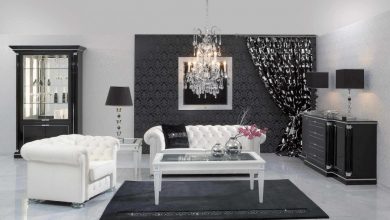
Japandi fusion, a design trend that beautifully combines the minimalist aesthetics of Japanese design with the functionality of Scandinavian design. In this article, we will explore how Japandi interior design brings a global flair to home decor, creating serene and stylish spaces. With its emphasis on simplicity, natural materials, and the harmony of form and function, Japandi fusion has gained popularity among design enthusiasts around the world.
But what exactly makes Japandi fusion so intriguing?
It’s the way it seamlessly blends the best of two distinct design philosophies, resulting in a unique style that is both minimalistic(here) and functional, while also incorporating global influences. Through the careful infusion of Japanese(buy here) and Scandinavian design principles, Japandi interior design provides a calming and harmonious environment that speaks to our modern sensibilities.
Throughout this article, we will delve into the core elements of Japandi style, from understanding the Japandi aesthetic and implementing a minimalist approach to choosing the right color palette and exploring the role of natural materials and craftsmanship in creating Japandi decor. We will also discuss the significance of furniture, accessories, and lighting in achieving the desired Japandi atmosphere, as well as effective storage solutions for maintaining uncluttered spaces.
Whether you’re a design enthusiast looking for inspiration or someone considering a home renovation, this article will provide valuable insights into Japandi fusion and how it can transform your living spaces. So, let’s embark on this journey of minimalism meeting functionality with a touch of global flair and discover the beauty of Japandi interior design.
Understanding the Japandi Aesthetic
In this section, we will delve into the fundamental aspects of the Japandi aesthetic. Japandi style is a harmonious fusion of the Japanese concept of wabi-sabi and Scandinavian simplicity. It brings together the timeless charm and elegance of these two design philosophies, resulting in a unique and captivating interior aesthetic.
The Harmony of Wabi-Sabi and Scandinavian Simplicity
At the heart of Japandi design lies the perfect balance between wabi-sabi and Scandinavian simplicity. Wabi-sabi is a Japanese concept that embraces imperfections and finds beauty in simplicity and natural materials.
It celebrates the authenticity of raw and organic elements, creating an atmosphere of tranquility and harmony. On the other hand, Scandinavian simplicity is characterized by clean lines, minimalism, and functionality.
This fusion of wabi-sabi and Scandinavian simplicity creates a design aesthetic that is understated yet warm, inviting, and effortlessly stylish. The combination of these two philosophies allows for the creation of spaces that are both visually appealing and functional.
Defining Features of Japandi Style
Japandi style is defined by several key features that set it apart from other interior design aesthetics. These features include:
- Clean lines and uncluttered spaces
- Neutral color palettes with muted tones
- Natural materials and textures
- Minimalist furniture with a focus on functionality
- Embracing imperfections and asymmetry
These defining features work together to create a sense of harmony and balance in Japandi interiors. Each element is carefully chosen to contribute to the overall aesthetic, resulting in spaces that are serene, calming, and visually appealing.
The Timeless Appeal of an East-West Fusion
One of the reasons Japandi style has gained popularity is its timeless appeal. The fusion of Japanese and Scandinavian design principles creates a sense of timelessness that transcends trends and fads. The clean lines, natural materials, and minimalist approach of Japandi design ensure that it remains relevant and enduring for years to come.
Another aspect of Japandi’s timeless appeal is its ability to seamlessly blend East and West. By combining the best elements of Japanese design with Scandinavian simplicity, Japandi creates a design aesthetic that is globally appealing. It brings together the elegance and sophistication of Japanese aesthetics with the functionality and practicality of Scandinavian design.

With its harmonious blend of wabi-sabi and Scandinavian simplicity, Japandi style offers a unique and captivating aesthetic that has a timeless appeal. In the next section, we will explore how to implement a minimalist approach in Japandi interior design.
Implementing a Minimalist Approach
When it comes to Japandi interior design, a minimalist approach is key to achieving the desired aesthetic. By embracing minimalism, we can create clean and uncluttered spaces that exude serenity and style. In this section, I will discuss the key principles of minimalism and provide tips on how to incorporate minimalist aesthetics into your Japandi home decor.
Minimalism is all about simplicity and eliminating excess. It involves decluttering your space and focusing on essential elements. By adopting a minimalist approach, you can create a sense of calm and tranquility in your home.

One of the main principles of minimalism is to only keep items that serve a purpose or bring you joy. Take a look at your belongings and consider what you truly need. Let go of unnecessary clutter and embrace a more minimalist lifestyle.
Incorporating minimalist aesthetics into your Japandi interior design can be achieved through various design elements. Clean lines, neutral color palettes, and a focus on functionality are all essential features of minimalist decor.
Consider using simple and streamlined furniture pieces that have both functionality and aesthetic appeal. Opt for pieces with clean lines and minimal ornamentation. This will create a sense of harmony and balance in your space.
Another way to embrace minimalism in Japandi interior design is through the use of natural materials. Choose furniture and decor made from organic materials such as wood, bamboo, and stone. These materials not only add a touch of warmth and texture but also align with the minimalist philosophy of simplicity and authenticity.
Lighting is also crucial in minimalist design. Incorporate soft and natural lighting to create a calm and inviting ambiance. Avoid harsh lighting or excessive fixtures that can disrupt the serenity of the space.
By implementing a minimalist approach in your Japandi interior design, you can create a harmonious and balanced space that is both visually appealing and functional. Embrace simplicity, declutter your space, and focus on essential elements to achieve the minimalist aesthetic that is characteristic of Japandi style.
Choosing Your Japandi Color Palette
When it comes to Japandi interior design, selecting the right color palette is crucial in creating the desired aesthetic. The use of muted tones and neutral shades is a key element in achieving a calm and serene atmosphere in your space. These understated colors provide a soothing backdrop that allows other design elements to shine.
To strike the right balance in your Japandi color palette, it’s important to consider the interplay between light and dark colors. Lighter shades can make a space feel open and airy, while darker tones add depth and sophistication. By combining light and dark colors thoughtfully, you can create a harmonious visual contrast that adds visual interest to your interior design.
One of the inspirations for Japandi color schemes is nature itself. Taking cues from the natural world, such as earthy browns, soothing greens, and calming blues, can bring a sense of tranquility to your space. These color schemes inspired by nature align perfectly with the principles of Japandi design, creating a connection between your environment and inner well-being.
When designing your Japandi interior, remember that the color palette you choose sets the tone for the entire space. By opting for muted tones and neutral shades, striking the right balance between light and dark, and incorporating nature-inspired color schemes, you can create a harmonious and inviting atmosphere that truly embodies the essence of Japandi style.

Japandi Interior Design
In the realm of interior design, Japandi fusion stands out as a unique and harmonious style that combines Japanese and Scandinavian influences. This fusion style is characterized by minimalist aesthetics, natural materials, and functional design principles, resulting in serene and stylish spaces.
The beauty of Japandi interior design lies in its ability to seamlessly blend the clean lines and simplicity of Scandinavian design with the timeless elegance and attention to detail of Japanese aesthetics. By marrying these two distinct design philosophies, Japandi creates a fusion style that is both modern and timeless.

One of the key elements of Japandi design is the use of natural materials. Wood, bamboo, and other organic textures are prominently featured, adding warmth and a sense of connection to nature. This emphasis on natural materials not only creates a visually appealing aesthetic but also contributes to a more sustainable and eco-friendly approach to interior design.
Functional design is another hallmark of Japandi interior design. Every element and piece of furniture is carefully chosen for its purpose, ensuring that it serves a practical function while also being visually pleasing. The combination of minimalist aesthetics and functional design principles results in spaces that are both stylish and highly functional.
The influence of Japanese design is evident in the attention to detail and the pursuit of simplicity. The use of clean lines, uncluttered spaces, and a mindful approach to design reflects the Japanese philosophy of finding beauty in simplicity. Scandinavian design, on the other hand, brings its signature minimalism and focus on functionality, perfectly complementing the Japanese influences.
Japandi interior design not only creates visually appealing spaces but also promotes a sense of calm and tranquility. By incorporating minimalist aesthetics, natural materials, and functional design principles, Japandi allows for a harmonious balance between form and function, resulting in spaces that are both visually pleasing and highly livable.
Natural Materials and Craftsmanship
In Japandi interior design, the use of natural materials and craftsmanship plays a crucial role in creating a harmonious and organic space. From the warm tones of wood to the natural beauty of bamboo, these materials add both visual appeal and a sense of connection to nature.

Wood, Bamboo, and the Beauty of Organic Textures
Wood and bamboo are key elements in Japandi interior design, known for their understated elegance and organic textures. The use of wood brings warmth to a space, while bamboo adds a touch of tranquility. Whether it’s a wooden dining table or a bamboo room divider, these natural materials create a sense of balance and serenity in the home.
Embracing Imperfection in Materials
In Japandi interior design, imperfections are celebrated rather than hidden. The concept of embracing imperfection, known as wabi-sabi, is deeply rooted in Japanese culture. It emphasizes finding beauty in the imperfect and appreciating the impermanence of things. Imperfections in natural materials, such as knots in wood or variations in grain, add character and uniqueness to the design.
The Role of Craftsmanship in Japandi Decor
Craftsmanship is highly valued in Japandi interior design. It emphasizes the skill, attention to detail, and dedication that artisans put into their work. From hand-carved wooden furniture to intricately woven bamboo screens, craftsmanship adds a sense of authenticity and quality to Japandi decor.
The Role of Furniture in a Japandi Home
In a Japandi home, the furniture plays a vital role in bringing the fusion of Japanese and Scandinavian design to life. The furniture not only adds functionality but also enhances the aesthetic elegance of the space.
Functional Design Meets Aesthetic Elegance
Japandi furniture embodies the perfect blend of functional design and aesthetic elegance. Each piece is thoughtfully crafted to serve a purpose while exuding a sense of sophistication. The clean lines and minimalist aesthetics of Scandinavian design are complemented by the subtle details and timeless beauty inspired by Japanese aesthetics.
Low-Profile, High-Comfort Pieces
Japandi furniture features low-profile designs that create a sense of openness and spaciousness in the living space. These pieces are designed to harmonize with the minimalist aesthetics of Japandi interior design. Despite their low-profile nature, Japandi furniture doesn’t compromise on comfort. High-quality materials and ergonomic designs ensure that every piece offers optimal comfort and relaxation.
Choosing Pieces with a Purpose
When selecting furniture for a Japandi home, it is important to choose pieces with a purpose. Each piece should serve both a functional and aesthetic purpose. Consider the needs of the space and how each piece will contribute to the overall design concept.
Whether it’s a sleek dining table, a cozy lounge chair, or a versatile storage solution, each piece of furniture should be carefully chosen to enhance the Japandi aesthetic.

By incorporating japandi furniture into your home, you can create a harmonious and tranquil environment that combines the best of Japanese and Scandinavian design. The functional yet elegant furniture pieces, with their low-profile designs and high-comfort features, add a touch of sophistication to every corner of your Japandi-inspired space.
Remember to choose pieces with a purpose, ensuring that each furniture item contributes to the overall aesthetic and functionality of your Japandi interior design.
Accessories and Decor in Japandi Styling
In Japandi interior design, accessories and decor play a crucial role in creating a harmonious and serene living space. By incorporating minimalist decor and drawing inspiration from both Scandinavian and Japanese design principles, you can achieve a clean and tranquil ambiance in your home.
Minimalist decor is a key characteristic of Japandi styling, focusing on simplicity and functionality. By using only essential accessories, you can create a clutter-free environment that promotes calmness and serenity. Opt for pieces that have a purpose and contribute to the overall aesthetic of the space.

The fusion of Scandinavian and Japanese design influences in Japandi interior design is reflected in the choice of accessories. Select items that embody the clean lines and organic textures typical of both styles. Incorporate natural materials such as wood and bamboo to add warmth and a touch of nature to your space.
When selecting accessories, keep in mind the Japanese design principle of “ma,” which refers to the concept of emptiness and the importance of creating space. Embrace negative space and avoid cluttering your living areas. This will contribute to a sense of calmness and balance in your home.
Creating a clean and serene interior in Japandi styling is all about balance and simplicity. Focus on decluttering your space and opting for a neutral color palette, such as muted tones and earthy shades. Introduce pops of color inspired by nature to add visual interest and create a serene atmosphere.
By carefully curating your accessories and decor, you can achieve a Japandi interior that blends minimalist aesthetics with a Scandinavian-Japanese fusion. Create a tranquil and inviting space that embraces the principles of clean and serene interiors.
Cultivating a Zen-Inspired Atmosphere
In Japandi interior design, creating a zen-inspired atmosphere is key to achieving a sense of tranquility and harmony in your home. It is about creating a space that promotes relaxation, meditation, and reflection. Let’s explore the important elements that contribute to cultivating this serene ambiance.
Quiet Spaces for Meditation and Reflection
One of the fundamental aspects of a zen-inspired atmosphere is the presence of quiet spaces dedicated to meditation and reflection. Designate a peaceful corner of your home where you can retreat from the noise and busyness of everyday life. Whether it’s a cozy reading nook or a dedicated meditation area, make sure it is free from distractions and exudes a sense of calmness.

Introducing Greenery as Living Art
Incorporating greenery into your Japandi interior design not only adds a touch of natural beauty but also enhances the zen-inspired atmosphere. Introduce plants and flowers as living art pieces that bring life and a sense of serenity to your space. From small potted plants on shelves to larger statement plants in corners, the presence of greenery will create a refreshing and rejuvenating ambiance.
Lighting: The Unsung Hero of Ambience
When it comes to cultivating a zen-inspired atmosphere, lighting plays a crucial role as the unsung hero of ambience. Opt for soft, warm lighting that creates a gentle and inviting glow throughout your space.
Consider using dimmer switches or adjustable fixtures to customize the intensity of light according to your mood and the time of day. The right lighting can transform your Japandi interior into a serene and tranquil sanctuary.
By incorporating quiet spaces for meditation and reflection, introducing greenery as living art, and carefully selecting and adjusting lighting, you can create a zen-inspired atmosphere that promotes relaxation and serenity in your Japandi home.
Effective Storage Solutions
In Japandi interior design, effective storage solutions play a crucial role in creating uncluttered spaces that promote a sense of calm and simplicity.
By incorporating hidden storage, multifunctional furniture, and organizational pieces, you can achieve a harmonious balance between functionality and aesthetics in your home.
Hidden Storage for Uncluttered Spaces
One of the key aspects of Japandi interior design is the elimination of visual clutter. Hidden storage solutions, such as built-in cabinets, floating shelves with concealed compartments, and storage ottomans, allow you to keep everyday items neatly tucked away, maintaining a clean and serene atmosphere in your living spaces.
This not only enhances the minimalist aesthetics but also promotes a sense of tranquility and order.

Multifunctional Furniture
Incorporating multifunctional furniture is another effective strategy in Japandi interior design. By choosing furniture pieces that serve dual purposes, such as a sofa with built-in storage or a coffee table that can transform into a desk, you can maximize the functionality of your space while minimizing the need for excessive furnishings.
This not only saves valuable floor space but also adds versatility to your home, allowing for easy adaptation to various activities and needs.
Organizational Pieces That Complement Design
In Japandi interior design, every element serves a purpose. Therefore, it is essential to select organizational pieces that not only provide storage solutions but also contribute to the overall design aesthetic.
Consider using woven baskets, minimalist wall hooks, and sleek storage containers in natural materials such as bamboo or rattan. These pieces not only help keep your space organized but also add texture and visual interest to your home.
In summary, effective storage solutions are a fundamental aspect of Japandi interior design. By incorporating hidden storage, multifunctional furniture, and organizational pieces that complement the overall design aesthetic, you can create a harmonious and clutter-free living environment that reflects the principles of Japandi fusion.
Conclusion
In conclusion, Japandi fusion represents a beautiful blend of minimalist aesthetics and global flair in interior design. Throughout this article, we have explored how the harmonious combination of Japanese and Scandinavian influences creates serene and stylish spaces that appeal to a wide range of individuals.
The minimalist aesthetics of Japandi interior design focus on clean lines, uncluttered spaces, and a sense of calmness. By incorporating natural materials, such as wood and bamboo, this fusion style brings warmth and organic textures into the home.
With its emphasis on functionality and purpose, Japandi fusion caters to those seeking a simple yet elegant design approach. The use of muted tones, neutral shades, and color schemes inspired by nature further adds to the peaceful atmosphere.
Ultimately, Japandi fusion offers a timeless appeal that transcends cultural boundaries. Its ability to create a harmonious balance between Eastern and Western design principles makes it a versatile and captivating style choice for those looking to transform their homes into havens of tranquility and beauty.









